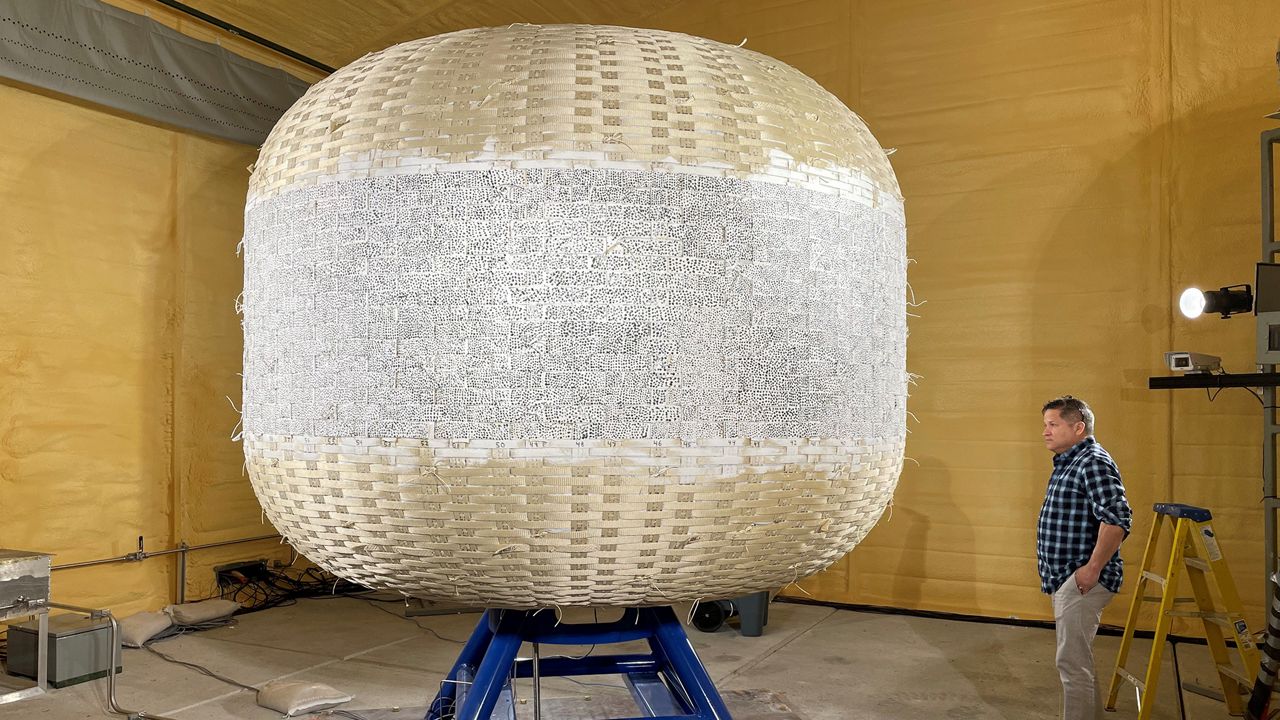Sierra Space announced on Monday the successful explosion of its inflatable habitat unit, stating that the test exceeded NASA’s requirements.
What You Need To Know
- LIFE unit press test is a success, says company
- Three small-scale units passed two different pressure tests, company confirms
- What’s a LIFE habitat unit? See below
The Colorado-based commercial space company stated that its Large Integrated Flexible Environment (LIFE) habitat completed a third stress test, exceeding NASA’s requirements.
“This latest assessment, called an Accelerated Systematic Creep Test, is a destructive materials testing method by which test engineers load the test unit — a subscale version of the inflatable habitat — with a sustained amount of pressure over time until it fails,” explained the company in a press release.
In the December 2022 test conducted at NASA's Marshall Space Flight Center in Huntsville, Ala., the shell of the unit burst after more than 150 hours of pressure being inflated, going beyond NASA’s short-term recommended creep duration of 100 hours, stated Sierra Space.
NASA created a climate-controlled, disposable building where the unit was testedb and this building was designed to meet two requirements: To protect the unit’s shell during the test and to be expendable once the unit burst, explained Sierra Space.
“Sierra Space’s LIFE pressure shell has an on-orbit performance requirement of 15 years, but with softgoods, there is a ‘times four’ safety requirement set by NASA, so we must ultimately prove we’re viable for 60 years,” stated LIFE Chief Engineer and Senior Director of Engineering Shawn Buckley in the press release. “Based on data from this first subscale creep test, we well exceeded the on-orbit mission performance requirement of 60 years for inflatable structures within our current architecture.”
In an interview with Spectrum News, Buckley gave a further explanation of the latest test.
“The subscale units are purpose built to test the performance of the LIFE habitat pressure shell. One of the requirements is to bring the unit to failure to capture the systematic performance. The captured data provides the engineering team with key information that can be compared to predicted performance,” he said.
Two previous tests were completed in July and November of 2022 and showed the units pressurized until they burst at the maximum Ultimate Burst Pressure, Sierra Space stated.
A second subscale Systematic Accelerated Creep Test is expected in early 2023, Sierra Space stated. If all goes according to plan, later this year additional stress tests will be done on the company’s full-scale LIFE units.
“The Sierra Space softgoods certification testing campaign will continue into 2023 with a series of subscale and full-scale tests. Next up is another subscale Creep test then followed by our first full scale LIFE Ultimate Burst Pressure test,” stated Buckley to Spectrum News.

What’s a LIFE habitat unit?
It is an inflatable habitat that will be 27 feet in diameter and 27 feet long (three stories tall), described the company.
It will have three floors that are designed for a human crew of four astronauts (and update to 12 for shorter periods) that will provide living and workspace, such as:
- Science labs
- Robotics work stations
- Medical and sick bay
- Sleep and hygiene quarters
- Galley
- Exercise equipment
The unit is designed to extend missions to low-Earth orbit missions, the moon and Mars.
Buckley told Spectrum News that the company hopes to put the LIFE units in action before 2030.
“Sierra Space is building the first commercial space station, Orbital Reef, with our partner Blue Origin. LIFE will be the primary habitation units on that station, which will be operational by the end of the decade,” he stated.



